View in other NatureServe Network Field Guides
NatureServe
Montana
Utah
Wyoming
Idaho
Wisconsin
British Columbia
South Carolina
Yukon
California
New York
Alpine Nerved Sedge - Carex neurophora
Native Species
Global Rank:
G4
State Rank:
S4
(see State Rank Reason below)
C-value:
7
Agency Status
USFWS:
USFS:
BLM:
External Links
State Rank Reason (see State Rank above)
MONTU contains over a dozen collections from 8 counties, several of the specimen labels note that the species was common (March 2007). Also observed from a riparian woodland on the Ashland District of the Custer National Forest in southeast Montana. The species is likely overlooked and suitable habitat appears to be common at least in the western half of the state.
General Description
Caespitose. Stems erect, 30–60 cm. Leaves: basal bladeless; cauline blades 2–3 mm wide; upper sheaths cross-corrugate ventrally. Inflorescence of 5 to 10 sessile spikes, congested in an ovoid head; lowest bract inconspicuous. Spikes ca. 5 mm long, all similar, male flowers above, inconspicuous; female below. Perigynia spreading to ascending, lanceolate, convex, veiny, light brown, 2.5–4 × 1–1.5 mm; the beak, 1–1.5 mm long, serrulate below, entire above; stigmas 2. Female scales brown with a paler midvein, as wide but shorter than the perigynia. Achene 2-sided, filling the perigynium (
Lesica et al. 2012. Manual of Montana Vascular Plants. BRIT Press. Fort Worth, TX).
Phenology
Fruit mature in July-August.
Diagnostic Characteristics
Many wetland sedges are similar to C. neurophora. Most have perigynia that are broadest near the middle (egg-shaped), while those of C. neurophora are broadest at the base. Carex jonesii and C. cusickii not have distinct crossribs on the upper leaf sheaths. Carex stipata has crossribs, but the perigynia are greater than 4 mm long. A hand lens and technical manual should be used for positive identification.
Species Range
Montana Range
Range Descriptions
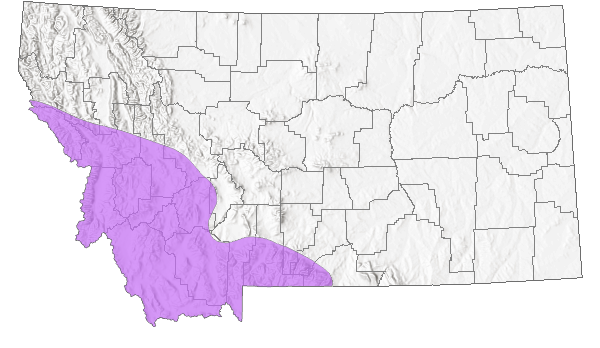
 Native
Native
Range Comments
WA and OR, east to MT, WY, and CO. Sparse.
Observations in Montana Natural Heritage Program Database
Number of Observations: 29
(Click on the following maps and charts to see full sized version)
Map Help and Descriptions
Relative Density
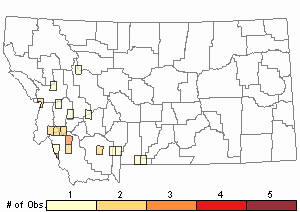
Recency
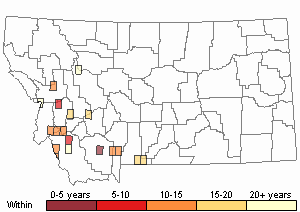
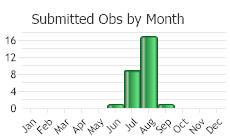
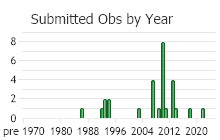
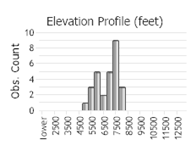 (Observations spanning multiple months or years are excluded from time charts)
(Observations spanning multiple months or years are excluded from time charts)
Habitat
Typically occurs in moist montane meadows but also in moist thickets, drier habitats and alpine areas.
Stewardship Responsibility
References
- Literature Cited AboveLegend:
 View Online Publication
View Online Publication Lesica, P., M.T. Lavin, and P.F. Stickney. 2012. Manual of Montana Vascular Plants. Fort Worth, TX: BRIT Press. viii + 771 p.
Lesica, P., M.T. Lavin, and P.F. Stickney. 2012. Manual of Montana Vascular Plants. Fort Worth, TX: BRIT Press. viii + 771 p.
- Additional ReferencesLegend:
 View Online Publication
View Online Publication
Do you know of a citation we're missing? Hermann, F. J. 1970. Manual of the Carices of the Rocky Mountains and Colorado Basin. Agricultural Handbook No. 374. USDA Forest Service. 397 pp.
Hermann, F. J. 1970. Manual of the Carices of the Rocky Mountains and Colorado Basin. Agricultural Handbook No. 374. USDA Forest Service. 397 pp. Lesica, P., M.T. Lavin, and P.F. Stickney. 2022. Manual of Montana Vascular Plants, Second Edition. Fort Worth, TX: BRIT Press. viii + 779 p.
Lesica, P., M.T. Lavin, and P.F. Stickney. 2022. Manual of Montana Vascular Plants, Second Edition. Fort Worth, TX: BRIT Press. viii + 779 p. Vanderhorst, J.P. and B.L. Heidel. 1995. Sensitive plant survey in the Tobacco Root Mountains, Madison County, Montana. Unpublished report to the Beaverhead and Deerlodge National Forests. Montana Natural Heritage Program. Helena, MT. 66 pp. plus appendices.
Vanderhorst, J.P. and B.L. Heidel. 1995. Sensitive plant survey in the Tobacco Root Mountains, Madison County, Montana. Unpublished report to the Beaverhead and Deerlodge National Forests. Montana Natural Heritage Program. Helena, MT. 66 pp. plus appendices.
- Web Search Engines for Articles on "Alpine Nerved Sedge"





